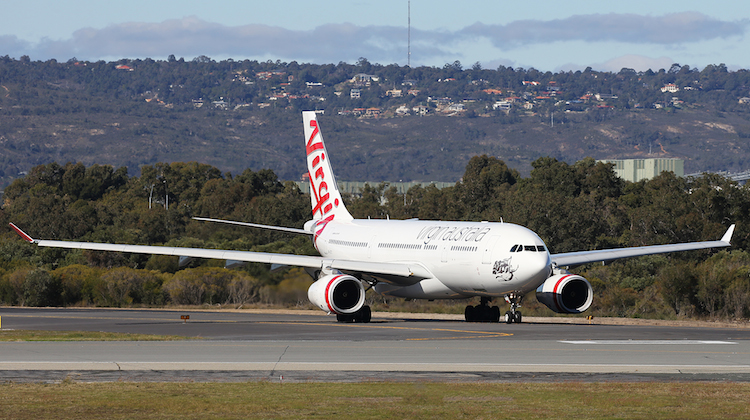
Virgin Australia is extending the use of its Airbus A330-200 widebodies on international routes, with services to Fiji from Melbourne and Brisbane to start in June 2016.
The A330 began flying internationally in April when Virgin deployed the aircraft on the Sydney-Nadi route on Saturdays during busy travel periods.
As with the Sydney service, A330 flights from Melbourne and Brisbane to Nadi have also been scheduled for Saturdays and will operate between late June and early October 2016.
The Sydney A330 flights will return in 2016 and operate between March-April, as well as from June to October, Virgin said on Wednesday.
“Since the introduction of our widebody Airbus A330-200 aircraft between Sydney and Fiji earlier this year, feedback from our customers has been overwhelmingly positive,” Virgin chief commercial officer Judith Crompton said in a statement.
“Virgin Australia will now offer the best premium product from Brisbane, Melbourne and Sydney to Fiji as the A330 features our new Business Class suites, with the world’s longest and widest fully lie-flat bed in domestic business class and a world-first collaboration with Nespresso that delivers great coffee in the sky.”
“This is great news for Velocity Frequent Flyers, with more chances available to redeem Velocity Points for upgrades and reward seats.”
The use of the A330, which normally operate between Perth and Australia’s east coast capitals, to Nadi was likely to improve the utilisation of Virgin’s six Airbus widebodies, given a number of A330s usually sit idle at Perth Airport over the weekend when trans-continental services are downgauged to smaller Boeing 737-800s.
Virgin chief executive John Borghetti said there was still more efficiency that could be gained from the airline’s widebody and narrowbody fleet.
“Indeed that is something that we are focused on doing,” Borghetti told reporters after Virgin’s annual general meeting in Brisbane on Wednesday.
“I think there is a bit more to come.”
While Fiji is Virgin’s first scheduled international route with the A330, the airline did operate the widebody to Bali during the Mount Raung ash cloud in July to pick up stranded passengers.
Meanwhile, Virgin also planned to add extra trans-Tasman flights from June 2016, with its Auckland-Sydney schedule increasing to 10 flights a week, while the number of weekly services on the Melbourne-Auckland route rising to nine flights.
There will also be extra flights between Brisbane and Queenstown during the winter ski season from June to October 2016.
Overall, Virgin said the changes represented about 75,000 more seats across the Tasman in 2016.
“Our new trans-Tasman services have been timed to suit corporate travellers as well as customers connecting to regional New Zealand services,” Crompton said.
“The five new return services to Auckland add an extra 1,760 seats each week on our Boeing 737 aircraft, which feature our award-winning Business Class.”
Virgin’s trans-Tasman flights are operated as part of its alliance with Air New Zealand.
Virgin’s international network suffered an underlying earnings before interest and tax (EBIT) loss of $68.9 million in the 12 months to June 30 2015, a decline of $22.8 million from the prior corresponding period.
Revenue from its international operations fell 3.3 per cent, while capacity was reduced by 0.4 per cent, Virgin reported in August, citing increased competitive pressures in its South East Asian and long-haul markets.
In terms of broader market conditions, Borghetti said the airline was starting to see a lift in inbound travel to Australia, particularly from the US, in response to the weaker local currency, noting that there was typically a six-to-12-month lag between the falling dollar and an improvement in travel numbers.
“We have already started to see a pickup on inbound growing out of the US in particular,” Borghetti said on Wednesday.
“We are quite happy with the trend that we are seeing now.”










